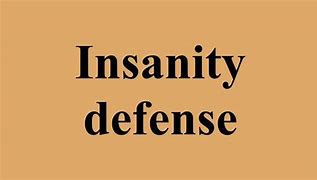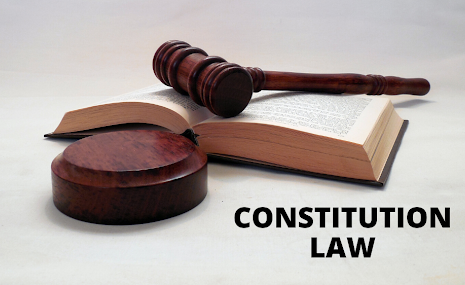National Control Over International Trade Scope in present era
Economic liberalization, rapid technological change and aggressive competition
continue to alter the environment in which industries operate. The relentless
global pressure has produced some interesting changes in the development and
structure of nations’ respective industrial sectors. The gradual globalization
process has emphasized the traditional notion that domestic policies, which once
were oriented toward increasing local industrial and economic advantages, have
become less effective (UNCTAD 1999). Indeed, governments and industries
consistently may view these types of domestic policies as isolationist and
limited approaches to economic efficiency. Some of the evidence of these changes
includes some countries’ implementation of economic policies that are designed
to attract global industrial investment, the prominent role of cross-border
mergers and alliances, and the cooperation among national and sub-national
governments. These features of the globalization process point to the need to
examine the growing importance of a nation’s competitiveness by investigating
the combination of industry-specific competitive advantages as well as a
nation’s comparative advantages (which is reflected in its ability to create an
environment conducive for trade and development).[1]
One important question any free trade system must resolve is the manner and
degree of regulatory autonomy individual jurisdictions retain despite a
commitment to the free flow of goods and services.[2] The expansion and
development of international trade is the need of time, but it may affect
adversely if allows to go unrestricted. Although the trend is falling toward
adopting a open and liberal international policy and impetus is given on the
free flow of international trade, still some restrictions to some extent are
also desirable on the part of domestic governments to save their own economic
and social growth from the adverse effects of unregulated and unrestricted
global trade. International Trade Control (ITC) laws regulate the movement of
goods, services and technology across borders for customs, national security and
foreign policy reasons. These laws apply to many areas of GE’s operations
including shipping/ receiving, logistics, manufacturing, engineering, sourcing,
finance, sales/marketing, customer service, IT and EHS. Software and technical
information exchanges across national boundaries, including e-mail, fax, web,
server and SupportCentral use, are subject to trade controls. The United States
also controls the release of technical information to non-U.S. nationals within
the United States as a “deemed export.” It is critical that we carefully observe
ITC laws in connection with these activities.[3]
Meaning of International Trade
International trade means trade between the two or more countries. International
trade involves different currencies of different countries and is regulated by
laws, rules and regulations of the concerned countries. Thus, International
trade is more complex than the domestic trade.[4]
Foreign and domestic trade relationship
Modern transportation and communication have forced a revolution in
distribution, creating an international market for more and more local products.
Paralleling this increase in the number of items and volume of foreign trade,
the world has also been afflicted with a growth in new and more cumbersome trade
barriers. To make more domestic products "go international," the amount of trade
between nations must grow; to make this possible, trade barriers must be
curtailed or eliminated. Hence, the nations of the world in the post war period
should turn to fuller cooperation in the field of international trade.[5]
Even though the foreign trade of a nation may appear small as compared to its
total national income, it has been demonstrated that a nation cannot long be
prosperous when the rest of the world with which it trades is suffering from
depression. Disturbances arising in one country tend to spread to others, and
involve their economic entities.[6]
Need of International Trade Control
Standards have many roles and functions. Not only do they establish a common
trading language between buyers and sellers, but they also ensure public safety
and the protection of the environment within and outside national borders.
Moreover, in today’s globalized production systems, standards ensure that parts
produced across borders fit and that networks are compatible. Regulations and
standards and the verification of their application through conformity
assessment procedures have, therefore, many benefits. However, inappropriate
regulations can result in high costs and inefficiencies in trading partner
countries as well as in the domestic economy and have international
repercussions.[7]
History of Foreign Trade policy or foreign Trade Control in India
Historically, India ran a trade surplus for centuries together through export of
spices, handicrafts, textiles etc. No restrictions on imports or exports were
officially maintained. But, the situation changed after the British took over
power. Before India got Independence, import of goods from Great Britain
received official encouragement through Imperial preferences. There was a
corresponding disincentive for import of goods from other countries.[8]
Statutorily, it was the Sea Customs Act, 1878 that provided the basis for
implementing the official bias in favour of imports from Britain. Goods
originating from other countries could be simply charged higher import duties
than the goods originating from Britain or territories favoured by Britain. 2.04
There was, however, no separate statutory mechanism or enactment to prohibit or
restrict import of goods, except under the Sea Customs Act, 1878. In other
words, goods could be freely imported provided the import duties were paid.
Under the Sea Customs Act, 1878, only a few goods were subjected to import
duties and the duty rates were also not too high. The Imperial government
preferred Land Revenue as the principal means to raise revenues. Import duties
did not constitute a significant share of the revenues.[9]
The Government of India Act, 1935 granted the Central government the exclusive
legislative powers to regulate import of goods into India and export of goods
from India. However, this power was never used till 1947, when the Imports and
Exports (Control) Act, 1947 was enacted. The need for the Act arose out of the
consequences of the Second World War.
In the early fifties, the Indian Govt. took several measures to build an
industrial base in the country. It allocated substantial resources for
infrastructure building such as steel plants and developing the core sector. The
private sector was also encouraged to set up industries in the non-core sector.
These infant industries needed protection from influx of imported goods. So, the
Govt. issued the Imports (Control) Order 1955 allowing most of the imports only
against an import licence.[10]
In 1976, far-reaching changes were made to the Imports & Exports (Control) Act,
1947. The amended Act gave the Central Government wider powers to prohibit,
restrict and control the Imports and Exports Trade. The Act covered practically
all articles of trade and manufacture except those permitted to be imported
under a licence or customs clearance permit or an Open General Licence. The
Exports (Control) Order 1988 held sway before liberalization process was
launched in 1991
International Trade Controls
Many countries regulate international trade transactions, such as imports,
exports and international financial transactions, for a variety of reasons,
including national security and foreign policy.[11] The Government of a specific
country would like to impose restrictions in the following forms or types:- 1.
Tariffs Rate or Customs Duties 2. Quantitative Restrictions. Type 1. Tariffs
Rate or Customs Duties:
To protect the interest of the local manufacturer, traders and service
providers, a government of a particular country, may implement different types
of tariff system.[12]
A. Single Column Tariff System:
In this system, same or uniform percentage of tariff duty rate is applied or
same amount of duty per unit of measurement is applied for a product
irrespective of the country of origin.
B. Conventional Tariff System:
Under this system, except a country with whom the bilateral agreement entered
into as a part of specific treaty, a uniform rate is applied on imports from all
other countries. Generally, specific treaties have been entered into with
specific countries due to political, racial or regional ties. Hence the tariffs
rates applicable for import and export with such country are called preferential
tariffs.
C. Specific Duty:
Whenever the tariff duty is imposed in as amount per units of a goods,
commodities, and services (e.g., tonnes, number, skill man hours, etc.), it is
known as specific duty rate. Instead of per unit of measurement, if the duty as
applicable as a percentage of value of the goods, commodities, or services, then
it is known as an ad valorem duty.
D. Compensatory Tariff Rate:
Whenever the imported product is available at quite a lower price than the
domestic running price of product, then to protect the interest of domestic
producers, a specific duty is imposed on imported goods. As an action of this,
the imported goods will not be in a position to stand in the domestic market.
Such duty is known as compensatory tariff duty.
E. Countervailing Duty:
Importing country will impose additional duty on imported goods if imported from
a particular country, in the case, when an exporting country supports its goods
to be exported through the monetary support provided in the form of subsidy.
Such additional duty is imposed on the import of such goods by importing country
to ensure the protection to domestic manufactures.
2. Quantitative Restrictions:
Government is also imposing the quantitative restrictions in addition to the
tariff controls to protect the interest of the domestic players. Through this,
it limits the physical quantity of goods to be imported during a given period in
a country.
To impose the quantitative restrictions, government resorts to the quota
specification, and also the import license. Quota limits the total quantity of
goods to be imported, while import license will limit the imports of an
individual importer.
Besides these there are some other restrictions or measures to control the
international trade which are generally applied by different nations few of them
are as follows:
1. Embargo
Embargo is a legal prohibition by a government or group of governments
restricting the departure of vessels or movement of goods from some or all
locations to one or more countries.
Embargoes may be broad or narrow in scope. A trade embargo, for example, is a
prohibition on exports to one or more countries, though the term is often used
to refer to a ban on all commerce. In contrast, a strategic embargo restricts
only the sale of goods that make a direct and specific contribution to a
country’s military power; similarly, an oil embargo prohibits only the export of
oil. Broad embargoes often allow the export of certain goods (e.g., medicines or
foodstuffs) to continue for humanitarian purposes, and most multilateral
embargoes include escape clauses that specify a limited set of conditions under
which exporters may be exempt from their prohibitions.[13]
2. Dumping
A common political rationale for establishing tariffs and quotas is the need to
combat dumping: the practice of selling exported goods below the price that
producers would normally charge in their home markets (and often below the cost
of producing the goods). Usually, nations resort to this practice to gain entry
and market share in foreign markets, but it can also be used to sell off surplus
or obsolete goods. Dumping creates unfair competition for domestic industries,
and governments are justifiably concerned when they suspect foreign countries of
dumping products on their markets. They often retaliate by imposing punitive
tariffs called anti-dumping tariffs that drive up the price of the imported
goods.[14]
3. Foreign investment Limits
Countries used to put restrictions on the foreign investments by way of imposing
limits on Foreign Direct Investment (FDI) and Foreign institutional
investors(FII) to promote and save their domestic market. However these
restrictions sometimes seems as barrier to the expansion of the market of a
particular country.
4. Licensing requirements
The requirement of prior approval, in the form of a license, to export, import
or to make investment in a particular country, is a good a good and an important
measure for international trade control. This practice establishes approved
exporters or investors and can allow the government or other parties to benefit
financially from the relatively scarce opportunities to export. Licenses are
often used in conjunction with export quotas.[15] Licensing helps the host
government to regulate the business of a foreign enterprise or a multinational
company in their jurisdiction.
5. Quality standard norms
States control the quality of import items to their country by prescribing the
quality standard norms. The foreign products have to pass through the tests
prescribed by the government to ensure that they are fit for the purpose for
which they are intended. These norms are helpful for the governments to keep the
substandard and hazardous products out form there trade markets.
WTO prohibitions on trade restrictions
WTO in time will become a formidable arm of the international trade system
together
with the IMF and the World Bank. Article XI of the GATT (Which latter on
concludes into WTO, in 1995) generally prohibits quantitative restrictions on
the importation or the exportation of any product by stating that “No
prohibitions or restrictions other than duties, taxes or other charges shall be
instituted or maintained by any Member . . . .” One reason for this prohibition
is that quantitative restrictions are considered to have a greater protective
effect than do tariff measures, and are more likely to distort the free flow of
trade. When a trading partner uses tariffs to restrict imports, it is still
possible to increase exports as long as foreign products become
price-competitive enough to overcome the barriers created by the tariff. When a
trading partner uses quantitative restrictions, however, it is impossible to
export in excess of the quota no matter how price competitive foreign products
may be. Thus, quantitative restrictions are considered to have such a
distortional effect on trade that their prohibition is one of the fundamental
principles of the GATT.[16]
The restrictions by WTO are not restricted to the quantitative measures only,
but due to its principles like Most favoured Nation or National Treatment, Which
restricts its members to differently treat any of its member in the matter of
tariffs or other trade restrictions. However the WTO also provides some
exceptions in this regard on the considerations of environment, health, or the
growth of less developed economies.
Impact of WTO on Indian Foreign Trade
India being a part of GATS by default becomes member of WTO in 1995, being
member, it had to fulfil its commitments and remove quantitative restrictions on
imports. However as india suffered major Balance of Payment crisis in 1991, it
was allowed to maintain some quotas on its imports. Latter on these quotas were
eventually removed in 2001and India moved to a tariff only trade regime.
Currently India’s tariff rates on industries are 8.5% and average tariff on
agriculture goods are 35%. Though India’s tariff rates are still higher than
some East and Southeast Asian countries, compared to its own past the rates are
much reduced and India is a now a more open country as compared to its past.[17]
India’s Trade policy in present scenario
India’s economic structure today presents a distinctly different picture from
what it was in 1991 when economic reforms started. In 1991 our foreign exchange
reserves had depleted substantially. We then had just enough reserves to tide
over the import requirements of three weeks. It was in this context that India
gradually started dismantling its quantitative restrictions, partially
liberalised its exchange rate and reduced the peak rate of customs duties. The
average duty on all products stands reduced from over 70% in 1991-92 to 12% in
2008-09.
The end of cold war at the international level and India's rejection of economic
self reliance in favour of trade promotions at the domestic level, transformed
India’s foreign economic relations. It leads to substantial economic engagement
with US, IMF, WTO, South Asia and China.[18] India’s foreign trade policy after
1991, is more liberal and open for foreign trade specially with US and China.
India and China has not allowed interfering their political issues with the
trade. India’s trade with china has grown from $4.7 billion in 2002-03 to $25.7
billion in 2006-07.[19]
In the Mid-Term Review of the Foreign Trade Policy (FTP) 2015-20 the Ministry of
Commerce and Industry has enhanced the scope of Merchandise Exports from India
Scheme (MEIS) and Service Exports from India Scheme (SEIS), increased MEIS
incentive raised for ready-made garments and made- ups by 2 per cent, raised
SEIS incentive by 2 per cent and increased the validity of Duty Credit Scrips
from 18 months to 24 months.[20]
All export and import-related activities are governed by the Foreign Trade
Policy (FTP), which is aimed at enhancing the country's exports and use trade
expansion as an effective instrument of economic growth and employment
generation.[21]
The Department of Commerce has announced increased support for export of various
products and included some additional items under the Merchandise Exports from
India Scheme (MEIS) in order to help exporters to overcome the challenges faced
by them.[22]
Conclusion
In any trade practices, now a days, the free flow of goods and services is
considered as most important and crucial aspect, the same is true for the
international trade also. The principles of GATS and WTO regulations are playing
a significant role to ensure the free trade practices in international regime.
Undoubtedly, free trade practices are appreciable for the advancement of
international trade, sometimes when it goes unrestrictive becomes hazardous to
the nation’s economic and social structure. Where a nation is bound to its
commitments in the international regime, its commitments also lies toward the
positive and healthy advancement of its own domestic regime, which is its first
priority. To take steps for the welfare and advancement of one’s own territory
is the most important aspect of nation’s sovereignty which cannot be taken away
from him. In this way the restrictions levied away by a nation for the welfare
and protection of its own economy especially when comes to issues of
environment, health and basic economical and social needs of its subjects may be
considered legitimate, but they will become hazardous when purpose exceeds the
boundaries of moral and ethical requirements, is illegitimate and hazardous for
the development of international trade practices.
The prohibitions on restrictive measures for control of international trade
practices, by WTO are primarily lies on only the quantitative measure and also
provides some exceptions on the ground economic, environment, health and other
necessary grounds are justified, until they implemented with great caution and
without the interference of international political aspects. There prohibitions
and restrictions both must be reasoned and should purely on merits of
circumstances exists, and then they are healthy for the international trade and
harmony and for the global welfare.
Bibliography
Secondary Sources
Books:
#
Gangualy, Sumit. India’s Foreign Policy Retrospective and Prospective. New York:
OXFORD University Press, 2010.
#
Gillies, Peter and Gabriel Moens. International Trade and Buisness: Law Policy
and Ethics. Sydney: Cavendish, 1998.
#
Institute of Charted Accountants of India. Handbook on Foreign Trade Policy and
Guid to Export & Import. New Delhi: ICAI Publications, 2008. 25 04 2018
#
Pal, Prathapratim. International Trade and India. New Delhi: Oxford University
Press, 2014.
Articles:
#
Arvius, Christer. “Standard ad Regulations in International Trade.” UN
Publications (n.d.) 25 04 2018 <
http://www.ierc.bia-bg.com/uploads/vtcontract/files/vtcontract__4ba9c266e3bb38f7650a6318ec82d468.pdf>.
#
Bonarriva, Joanna. “Export Controls: An Overview Of Their Use, Economic Effects,
And Treatment In The Global Trading System.” 2009. 25 04 2018 <
https://www.usitc.gov/publications/332/ID-23.pdf>.
#
Chand, Smriti. “THe Meaning and Defination of Foreign Trade or International
Trade-Explained!” (n.d.) 09 04 2018
#
Floyd, M.Riddick and W.Romita Joseph. “Analysis of National and International
Aims and Intrest in Trade.” (n.d.). 09 04 2018
#
H, Hafsa. “Main Types of Trade Restrictions Government.” 25 04 2018 <
http://www.yourarticlelibrary.com/international-trade/2-main-types-of-trade-restrictions-government/98294>
#
Marwell, Jeremy C. “Trade and Morality: The WTO Public Morals Exeption after
Gambling.” NYULR (n.d.).
#
Taren, Berna and Semra Oncu. “The Relationship Between International Trade and
National Competitiveness.” (n.d.). 09 04 2018
[1] Berna Taren, Semra Oncu et.al., “The Relationship Between
International Trade And National Competitiveness” assessed on 09-04-2018 at
7:28pm
[2] Jeremy C. Marwell, “Trade And Morality: The WTO Public Morals Exception
After Gambling” NYULR.
[3] assessed on 25-04-2018 at 12:04pm.
[4] Smriti Chand, “The Meaning and Definition of Foreign Trade or
International Trade – Explained!”assessed on 09-04-2018 at 7:42pm
[5] M.Riddick Floyd And W.Romita Joseph, “Analysis of National and
International Aims and Interests in Trade” assessed on 09-04-2018 at 7:53 pm
[6] Ibid.
[7] Christer Arvius, “Standards And Regulations In International Trade” UN
Publications <
http://www.ierc.bia-bg.com/uploads/vtcontract/files/vtcontract__4ba9c266e3bb38f7650a6318ec82d468.pdf>
assessed on 25-04-2018 at 12:15pm.
[8] Institute of Charted Accountants of India, Handbook on Foreign Trade
Policy and Guide to Export & Import (ICAI Publications, New Delhi, 2008)
assessed on 25-04-2018 at 1:19 pm
[9] Ibid.
[10] Ibid.
[11] assessed on 09-04-2018 at 8:01pm
[12] Hafsa H, “Main Types of Trade Restrictions | Government” <
http://www.yourarticlelibrary.com/international-trade/2-main-types-of-trade-restrictions-government/98294>
assessed on 25-04-2018 at 5:09pm.
[13] assessed on 25-04-2018 at 4:00pm.
[14] assessed on 25-04-2018 at 4:08pm
[15] Joanna Bonarriva, “Export Controls: An Overview Of Their Use, Economic
Effects, And Treatment In The Global Trading System” U.S. International Trade
Commission (2009) https://www.usitc.gov/publications/332/ID-23.pdf> assessed
on 25-04-2018 at 04:32pm.
[16] http://www.meti.go.jp/english/report/downloadfiles/gCT0214e.pdf
assessed on 25-04-2018 at 5:47pm.
[17] Prathapratim Pal, “International Trade and India” 170 (Oxford University
Press, New Delhi, 2014)
[18] Sumit Gangualy, India’s Foreign Policy Retrospective and Prospective 317
(OXFORD University Press, New York, 2010)
[19] Id. P-316
[20] https://www.ibef.org/economy/trade-and-external-sector> assessed on
26-04-2018 at 12:10pm.
[21] Ibid.
[22] Ibid.
Law Article in India
Legal Question & Answers
Lawyers in India - Search By City
LawArticles
How To File For Mutual Divorce In Delhi

How To File For Mutual Divorce In Delhi Mutual Consent Divorce is the Simplest Way to Obtain a D...
Increased Age For Girls Marriage

It is hoped that the Prohibition of Child Marriage (Amendment) Bill, 2021, which intends to inc...
Facade of Social Media

One may very easily get absorbed in the lives of others as one scrolls through a Facebook news ...
Section 482 CrPc - Quashing Of FIR: Guid...

The Inherent power under Section 482 in The Code Of Criminal Procedure, 1973 (37th Chapter of t...
The Uniform Civil Code (UCC) in India: A...

The Uniform Civil Code (UCC) is a concept that proposes the unification of personal laws across...
Role Of Artificial Intelligence In Legal...

Artificial intelligence (AI) is revolutionizing various sectors of the economy, and the legal i...








Please Drop Your Comments